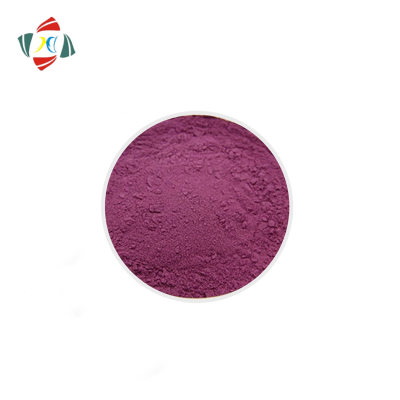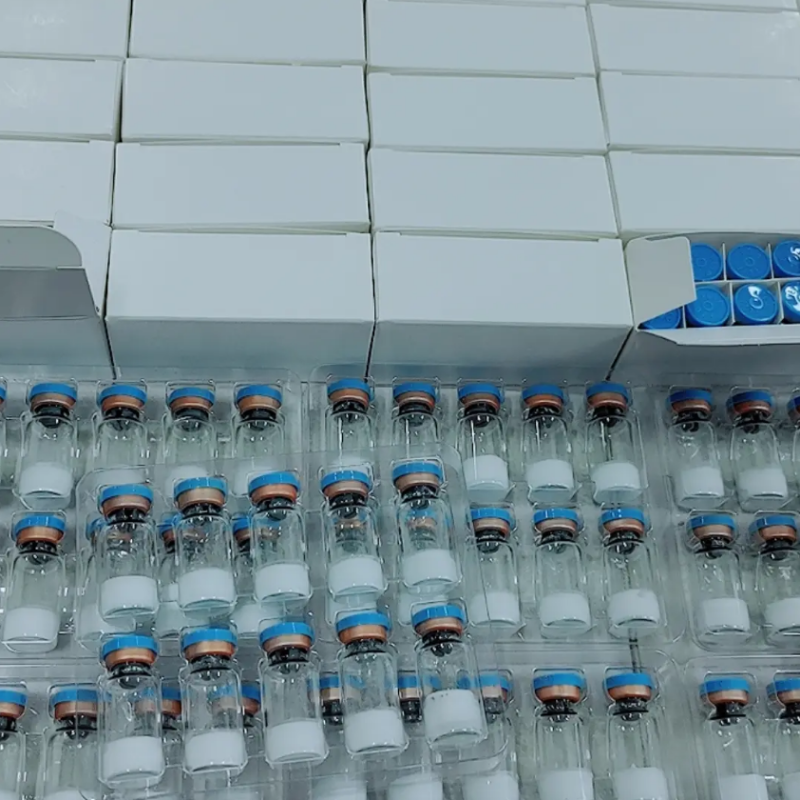-
Categories
-
Pharmaceutical Intermediates
-
Active Pharmaceutical Ingredients
-
Food Additives
- Industrial Coatings
- Agrochemicals
- Dyes and Pigments
- Surfactant
- Flavors and Fragrances
- Chemical Reagents
- Catalyst and Auxiliary
- Natural Products
- Inorganic Chemistry
-
Organic Chemistry
-
Biochemical Engineering
- Analytical Chemistry
- Cosmetic Ingredient
-
Pharmaceutical Intermediates
Promotion
ECHEMI Mall
Wholesale
Weekly Price
Exhibition
News
-
Trade Service
Only for medical professionals to read for reference.
Anti-SSA antibody positive can appear in a variety of autoimmune diseases~Sjogren's Syndrome (SS) must be familiar to all rheumatologists.
It is named after the Swedish doctor Henrik Sjogren A disease
.
Among the many rheumatisms, its incidence is second only to rheumatoid arthritis, but the attention is far less than that of systemic lupus erythematosus (SLE) and ankylosing spondylitis
.
Today we will talk about the well-known antibody in this common disease-anti-SSA antibody
.
1 Discovery of anti-SSA antibody Anti-SSA antibody was the first antibody found in Sjogren’s syndrome patients in 1962, and then in 1969, two different research teams in the body of an SLE patient named "Ro" and another Anti-SSA antibodies are found in SS patients, so anti-SSA antibodies are also known as anti-Ro antibodies
.
In 1974, the anti-La antibody was tested and reported.
After the exchange of antigen and serum, it was confirmed that the anti-Ro antibody was the anti-SSA antibody, and the anti-La antibody was the anti-SSB antibody [1]
.
2 The distribution and composition of anti-SSA antibodies correspond to those of anti-SSA antibodies.
SSA antigens are widely distributed in various tissues of humans and animals, especially in the heart, liver, kidney, brain and other substantial organs, most of which are found in the cytoplasm.
Within, a small part exists in the special perinuclear area and the nucleus [2]
.
It has been thought that the protein components of SSA antigen include two molecular weights of 60KD and 52KD, that is, the two subunits of anti-SSA antibodies—anti-SSA/Ro60 antibody and anti-SSA/Ro52 antibody.
The test emphasizes that both 52KD and 60KD are positive to report anti-SSA.
Antibody positive, cannot report when anti-Ro52 is positive alone
.
With the continuous progress of research, researchers found that natural SSA antigens only include Ro60, and traditional anti-SSA antibodies refer to anti-Ro60 antibodies
.
Anti-Ro52 and anti-Ro60 are different antibodies, so anti-SSA antibody and anti-Ro52 antibody need to be tested separately
.
3 Clinical significance of anti-SSA antibody positive Anti-SSA antibody positive can appear in a variety of autoimmune diseases, and its positive rate in SLE is 30%-50%, in SS, it is 50%-80%, in RA 3%-5%[2-3]
.
It should be noted that anti-SSA antibodies are closely related to certain specific clinical manifestations of autoimmune diseases, such as photosensitive skin rash, hypergammaglobulinemia purpura, neonatal lupus syndrome, and congenital heart block (CHB) and so on
.
In addition to being closely related to SS, studies have shown that anti-SSA antibodies are a poor prognostic factor in patients with inflammatory myopathy.
About 20%-40% of patients with inflammatory myopathy are positive for anti-SSA antibodies and are associated with connective tissue disease.
(CTD-ILD) The appearance and development are related, and the positive anti-SSA antibody is a risk factor for recurrence in patients with PM/DM after stable disease [4]
.
In addition, when the serum anti-SSA antibody of SLE patients is positive, the chance of getting lupus nephritis decreases [2]
.
When it comes to anti-SSA antibodies and SS, everyone will definitely think of the classification standards of SS.
Both in the 2002 International Classification Standard and the 2012 American College of Rheumatology (ACR) classification standards, there are anti-SSA antibodies and anti-SSB antibodies.
.
By 2016, the anti-SSB antibody positive in the ACR/EULAR SS classification standard has been eliminated
.
The reason for this comes from a study that included 3297 SS patients, of whom 63% (2061 cases) were anti-SSA/anti-SSB antibodies (-), 35% (1162 cases) were anti-SSA (+), 2% (74 Example) Only anti-SSB (+)
.
Compared with patients with pure anti-SSB (+) or anti-SSA/SSB (-), the typical features of SS in patients with anti-SSA antibody (+) are more obvious and have higher disease activity.
Pure anti-SSB antibody (+) and anti-SSA/SSB (-) SSA/SSB (-) people are similar in performance
.
This suggests that anti-SSB antibody positive/anti-SSA antibody negative has nothing to do with the typical characteristics of SS [5]
.
In addition to the above, anti-SSA antibody positive is also worthy of attention.
In pregnancy, pregnant women with anti-SSA and anti-SSB antibody positive are likely to give birth to children with neonatal lupus and CHB
.
The earliest people found anti-SSA antibodies in the fetal myocardial eluate, and IgG-type anti-SSB antibodies were found on the surface of myocardial fibers.
Therefore, it is believed that CHB is a passively acquired autoimmune disease.
Caused by the fetus[2]
.
Studies have shown that the occurrence of CHB is often related to the titer of anti-SSA antibodies.
Heart-related complications are less likely to occur when the titer is too low.
The susceptible period of fetal heart rate is 16-24 weeks of pregnancy
.
Therefore, all female patients with SLE and SS should be evaluated for anti-SSA and anti-SSB antibodies when preparing for pregnancy, and it is recommended to perform fetal echocardiography every week during 16-24 weeks.
If a child with CHB has been born in the past, it is recommended to cover the examination time to 32 Week [6]
.
4 Summary In summary, it can be seen that anti-SSA antibodies are not only closely related to SS, but also closely related to certain specific clinical manifestations of autoimmune diseases, such as photosensitive rash, hypergammaglobulinemia purpura, neonatal lupus syndrome, and congenital heart block and so on
.
Anti-SSA antibody positive may be one of the factors of poor prognosis of inflammatory myopathy, and it is related to the appearance of CTD-ILD
.
Clinically, pregnant patients who encounter anti-SSA and anti-SSB antibodies are recommended to undergo echocardiography every week during 16-24 weeks
.
References: [1] Yin Guocai, Liu Yurong, Ma Cong.
Autoantibodies against Ro and La and their clinical significance[J].
Clinical Medicine,1997(01):30-32.
[2]Liu Li,Zhang Fengchun.
SSA/ The clinical and biological characteristics of Ro antigen[J].
Chinese Journal of Rheumatology,2001(06):384-386.
[3]Tan EM.
Antinuclear antibodies:diagnosticmarkers for autoimmune diseases and probes for cell biology.
Adv Immunol.
1989 ;44:93-151.
doi:10.
1016/s0065-2776(08)60641-0.
PMID:2646863.
[4]Tatebe N,SadaKE,Asano Y,Zeggar S,Hiramatsu S,Miyawaki Y,Ohashi K,Morishita M ,Katsuyama T,Katsuyama E,Watanabe H,Narazaki M,Watanabe K,Kawabata T,WadaJ.
Anti-SS-A/Ro antibody positivity as a risk factor for relapse in patients with polymyositis/dermatomyositis.
Mod Rheumatol.
2018 Jan;28( 1):141-146.
doi:10.
1080/14397595.
2017.
1317377.
Epub 2017 May 2.
PMID:28463039.
[5]Baer AN,McAdams DeMarco M,Shiboski SC,Lam MY,Challacombe S,Daniels TE,Dong Y,Greenspan JS, Kirkham BW, Lanfranchi HE, Schiødt M, Srinivasan M, Umehara H, Vivino FB, Vollenweider CF, Zhao Y, Criswell LA,Shiboski CH;Sjögren's International Collaborative Clinical Alliance(SICCA) Research Groups.
TheSSB-positive/SSA-negative antibody profile is not associated with key phenotypicfeatures of Sjögren's syndrome.
Ann Rheum Dis.
2015 Aug;74(8):1557-61.
doi:10.
1136/annrheumdis-2014-206683.
Epub 2015 Mar 3.
PMID:25735642;PMCID:PMC6697481.
[6]Zhang Zhidan,Xu Yongzhi,Xie Tong.
Research progress in perinatal management of pregnancy complicated with systemic lupus erythematosus[J].
Chinese Contemporary Medicine, 2021, 28(12): 54-58.







